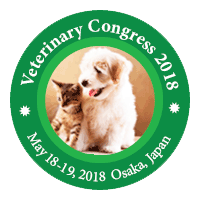
Kalthoum Sana
National Center of Zoosanitary Vigilance, Tunisia
Title: Identification of foot and mouth disease risk areas in Tunisia
Biography
Biography: Kalthoum Sana
Abstract
Foot and mouth disease (FMD) is a severe viral disease that affect many species. It causes considerable economic losses (mortality, trade restrictions ...). In 2014, Tunisian veterinary services have reported more than 140 outbreaks of FMD serotype O in cattle and sheep in several regions. It is the first report of FMD since 1999 in Tunisia. According to the World Reference Laboratory for FMD, strain present in Tunisia was closely related to that identified in Libya in 2013. Risk identification approaches can help veterinary services to develop surveillance strategies, particularly for highly transmissible disease like FMD. In this context, this study was conducted in Tunisia to identify FMD risk areas using GIS. Risk of introduction was evaluated separately from the risk of dissemination. To evaluate risk introduction of FMD, status of neighboring countries, control measures, legal or illegal movement ware evaluated by a group of experts. For the exposure, several risk factors such as animal movement at national level and borders, animal density, accessibility were combined in order to categorize regions in four level of risks. The two maps (introduction and exposure) were subsequently combined, resulting in the risk of FMD occurrence. The validity of this result was assessed by matching very high and high-risk areas identified against FMD outbreaks reported during the last three years. Results indicate that there is perfect spatial agreement between the class map and the historical FMD outbreaks (70% of outbreaks). The main advantage in using risk mapping is to facilitate control disease, especially in countries with limited budget and focus surveillance on high-risk areas.

